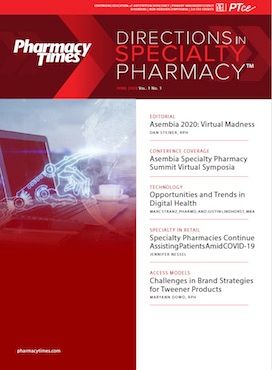Publication
Article
Specialty Pharmacy Times
Bruton Tyrosine Kinase Inhibitors Have Revolutionized Care for B-Cell Malignancies
There has been growing evidence supporting new therapeutic approaches for this heterogenous group of diseases.
THE GROWING USE of Bruton tyrosine kinase (BTK) inhibitors for B-cell malignancies was a topic of interest in a virtual symposium held in conjunction with the Asembia Specialty Pharmacy Summit. There has been growing evidence supporting new therapeutic approaches for this heterogenous group of diseases. Although non-Hodgkin lymphoma represents one of the largest groups of B-cell malignancies, chronic lymphocytic leukemia (CLL) and Waldenstrӧm macroglobulinemia are also included. BTK regulates the survival and proliferation of B cells and interactions between cells in the tumor microenvironment. It is among the most important drug targets for these types of diseases.
Anthony Perissinotti, PharmD, BCOP, covered the clinical presentations of CLL, mantle cell lymphoma, and Waldenstrӧm macroglobulinemia and the nuances of each disease, including natural course and expected survival.
Clinicians currently have the option of selecting BTK inhibitors for patients with B-cell malignancies from a long list of drugs and biologics. These include ibrutinib, acalabrutinib, and zanubrutinib. In addition, several BTK inhibitors are in clinical trials, with tirabrutinib and vecabrutinib closest to seeking approval. In CLL, which is the most common leukemia in the United States, the BTK inhibitors ibrutinib and acalabrutinib are considered preferred first-line options. Ibrutinib, acalabrutinib, and zanubrutinib are all recommended for patients who have relapsed or refractory mantle cell lymphoma following a short response duration to prior chemoimmunotherapy. Ibrutinib is also on the preferred regimen list for relapsed or refractory marginal zone lymphoma. The BTK inhibitors are also being employed with increasing frequency in patients who have Waldenstrӧm macroglobulinemia.
Perissinotti explained the 2 types of BTK inhibitors: irreversible and reversible, both of which exhibit different pharmacokinetic properties. While all approved agents are irreversible, some of the BTK inhibitors under clinical investigation are reversible. The reversible BTK inhibitors function via noncovalent binding and do not rely on C481 interaction, which means they are not susceptible to the C481S mutation, one of the leading causes of resistance.
BTK inhibitors have an advantage over traditional chemotherapy because selectivity minimizes offtarget effects. Yet, these drugs have some unique adverse effects (AEs), and health care teams need to use patient-specific factors to guide treatment decisions. BTK inhibitors have been associated with cardiac toxicities, including atrial fibrillation and hypertension among others, making their use more challenging in patients who have a history of atrial fibrillation, especially if it is uncontrolled, or in patients who have uncontrolled hypertension. Nuances in frequency of AEs observed among all 3 BTK inhibitors exist and clinicians should be aware of these when selecting therapies and developing monitoring strategies for patients.
Current clinical practice is continuous long-term administration of BTK inhibitors until either disease progression or unacceptable toxicity, but researchers are hopeful that combination therapies will improve outcomes and limit the duration of BTK inhibitor therapy. Their reasoning is simple; long-term BTK inhibitor use is expensive and becomes complicated if toxicities and/or resistance emerge.
Kirollos Hanna, PharmD, BCPS, BCOP, talked about the specialty pharmacist’s multiple roles in the treatment team and particularly, their role in maximizing adherence. Without considering demographics or disease- and therapy-related factors, satisfaction with care when drug treatment begins and the perceived necessity of treatment influence adherence. As a result, patient education addressing these issues is the cornerstone of successful anticancer treatment.
In addition to patient counseling, specialty pharmacists must manage drug-related AEs and monitor for drug—drug interactions. Patients who have B-cell malignancies have another need that requires the pharmacist to engage the entire team: coordination of care. Because these patients often receive care in multiple settings, including infusion centers, ambulatory clinics, and home settings, they will need providers who ensure that the treatment schedule and monitoring requirements are manageable. Multidisciplinary collaboration is critical to the success of treatment for patients receiving a BTK inhibitor as part of their treatment plan. Hanna concluded by showing evidence that pharmacy-led oral chemotherapy management programs have improved patient knowledge, adherence rates, time to medication access, identification of clinically significant issues including AEs and important drug interactions, and provider and patient satisfaction.







